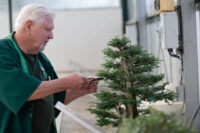Vintage 2014 is almost completed; most of us finished harvest this week. Now it’s time to look forward to 2015, and do a few rain dances.
Planting a cover crop in the vineyards has been a common practice in Sonoma for years. It is a great way to replenish the soil with nutrients and helps stabilize the soil to prevent erosion.
There are many benefits to cover cropping. For organic growers, it’s a way of producing their own fertilizer on their land naturally. It is cost effective and is an easy practice. This is how it works.
In vineyards where tilling is used, the seeds are drilled in after harvest. They are germinated by the winter rains and are allowed to grow throughout the winter. In the springtime these fully grown plants are incorporated into the soil. This practice allows their nitrogen to enter into the soil around the root zone of the grapevine where it is much needed.
Some vineyards in Sonoma are non-till vineyards. In these vineyards the soil is not disturbed and the seeds are incorporated by the rains. This practice is mainly to control soil erosion, and only benefits the top of the soil layer.
There are many reasons to plant a cover crop. First and foremost it is a way of producing nitrogen into the soil naturally. Before chemical fertilizers all farming was based on planting crops that helped the following crop. It is also beneficial for vineyards with poor drainage. After the heavy rains these plants help soak up the unwanted water.
Fava beans, Bell beans, clover, rye grasses and other oats are commonly used and have high levels of nitrogen. When incorporated they keep the soil fertile and well aerated.
Additionally, these plants produce flowers that attract beneficial insects into the vineyard. These beneficials are important for vine health and are a predators for many invasive species.
Most cover crops are replanted year after year in Sonoma. They are usually incorporated before they produce seeds. Mustard was a very popular cover-crop in the past, but is not used much anymore due to its ability to take over the vineyard. Even though it may look pretty it is hard to get rid of once introduced.





Be First to Comment